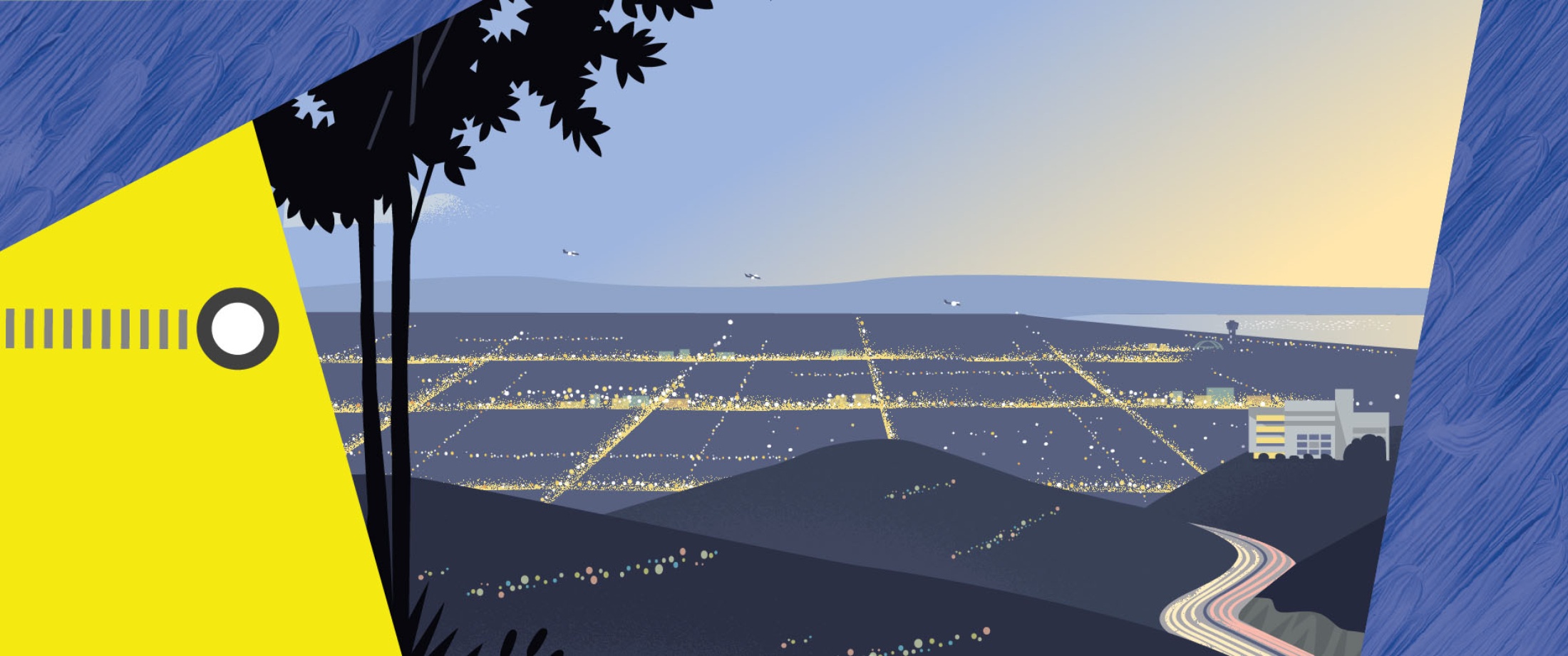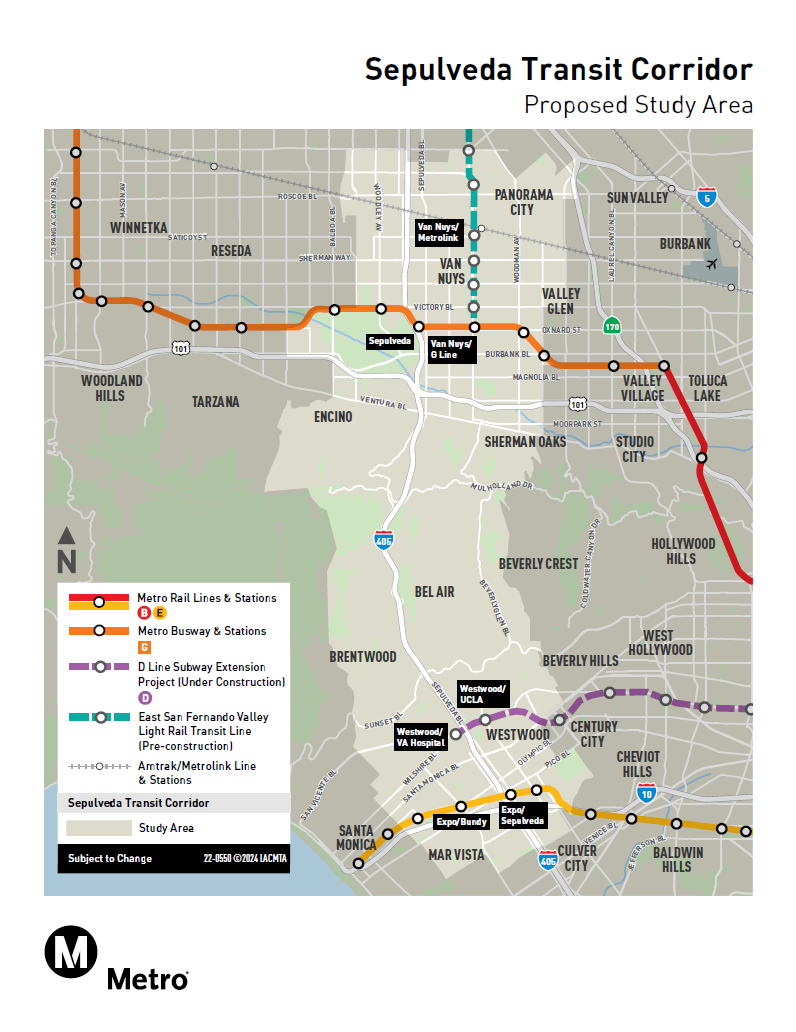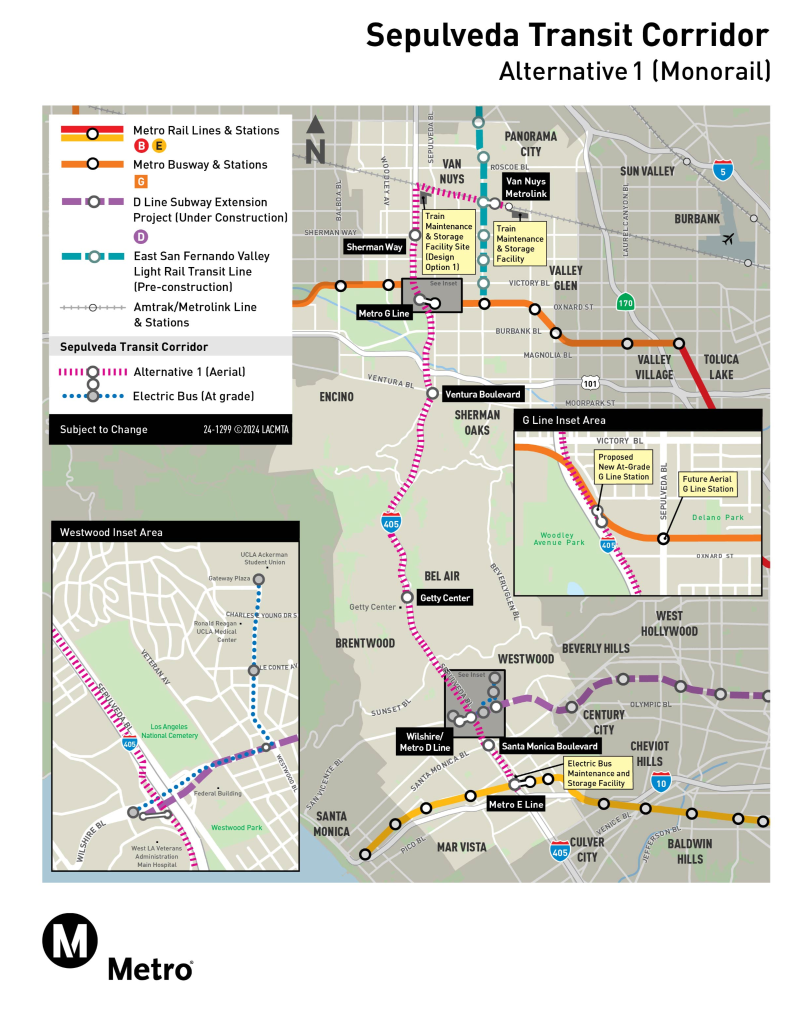Sepulveda Transit Corridor Project
A high-capacity rail line connecting the San Fernando Valley to Westside and eventually LAX — relieving congestion and transforming how Los Angeles moves


The Sepulveda Transit Corridor is a proposed high-capacity rail line that will provide a crucial north-south transit connection between the San Fernando Valley, the Westside and eventually Los Angeles International Airport (LAX). Currently under environmental review, Metro is evaluating multiple alternatives — including heavy rail and monorail technologies — to address one of the most heavily traveled and congested corridors in Los Angeles County. If built, the line could serve more than 120,000 daily riders and offer a travel time of just 20 minutes between the Valley and Westside. This project is funded in part by Measure M and aims to support regional growth, environmental sustainability, and equity in transit access. Metro is partnering with engineering firms and local municipalities to identify the most effective and community-supported solution. |

Help Us Plan

Explore the Alternatives
View all five options currently under review, including maps and customer journeys videos.

Connect with Metro
We want to hear from you. Share your input as we move through the construction process.
Prop A Funding Approved
Completion of I-405 Widening Project
Measure M Commits $9.5B
Metro Launches Feasibility Study
Final Feasibility Report Released
Pre-Development Agreements (PDAs) Signed
Environmental Review Begins
ExpressLanes Conversion Study Advances
Draft EIR Release & LPA Selection
Frequently Asked Questions
A proposed rail line offering a fast, high-capacity transit connection between the San Fernando Valley, Westside, and LAX.
Metro is currently reviewing six alternatives, including both heavy rail and monorail options, both with varying alignments.
The project is currently in the planning and environmental review phase. A construction timeline will be shared once a preferred alternative is selected.
Funding comes in part from Measure M, with additional support from local, state, and federal sources.
- Van Nuys Metrolink Station
- G Line Connection
- Ventura Bl
- The Getty Center
- UCLA
- D Line Connection
- Santa Monica Bl
- E Line Connection
Get Involved
Help shape this project for good. We want to hear from you:

Our project team is here to listen.
By connecting with us, you bring valuable insights to the table, helping create a Metro that truly reflects LA’s unique spirit.
